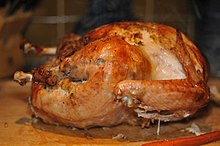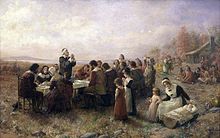A Christmas decoration is any of several types of decorations used at Christmas time. The traditional colours of Christmas are pine green (evergreen), snow white, and heart red. Blue and white are often used to represent winter, or sometimes Hanukkah, which occurs around the same time. Gold and silver are also very common, as are just about any other metallic colour. Typical images on Christmas decorations include Baby Jesus, Father Christmas or Santa Claus, and the star of Bethlehem. Typical winter icons include snowflakes, snowmen, icicles, and even penguins and polar bears.(source:wikipedia-christmas decoration)
Christmas Bows
\kind of paper designed for gift wrapping. Gifts may also be wrapped in a box. They may be held closed with ribbon and topped with a decorative bow (an ornamental knot made of ribbon).
History
The use of wrapping paper is first documented in ancient China, where paper was invented in 2nd century BC.[1] In the Southern Song dynasty, monetary gifts were wrapped with paper, forming an envelope known as a chih pao. The wrapped gifts were distributed by the Chinese court to government officials.[2] In the Chinese text Thien Kung Khai Wu, Sung Ying-Hsing states that the coarsest wrapping paper is manufactured with rice straws and bamboo fiber.[2]Although the Hall brothers Rollie and Joyce Hall, founders of Hallmark Cards, did not invent gift wrapping, their innovations led to the development of modern gift wrapping. They helped to popularize the idea of decorative gift wrapping in the 20th century, and according to Joyce Hall, "the decorative gift-wrapping business was born the day Rollie placed those French envelope linings on top of that showcase."(Wikipedia-gift wrapping).
Here's some pictures how to use a bow and how to decorate your gifts for different kinds of occasions
Gift Wrappings
You can even stick a bow on a paper bags to make it look nicer like it shown below.
Use it for birthdays, weddings, baby showers etc. or any occasions that you can think of that you need a present to wrap up.
The gift wrapping below and the bow is one of my unique creations coz its made of recycled papers. I cut some papers from the magazine and stick them together enough to wrap the whole present as you can see there's some writing on it, and I cut some colored ones that you can find inside the magazine to make a beautiful bow. This is how it turned out.
To those who can't afford to buy a nice wrapping papers this is a good idea to use recycled papers, besides saving a lot of money its also environmental friendly.
We decided not to get each others present this year just to save some money but look what happen, We always break the rules and end up getting more that it even spread out to the side coz there's no more space under the tree. I said to my husband you don't need to get me anything this Christmas and I whisper to myself (but I'm expecting something lol).Somebody might be good this year coz I checked all the tags and it says from SANTA. Hmm Santa your so good thank you.
Christmas Wreath Chocolate Cupcakes
Chocolate i/ˈtʃɒk(ə)lət/ is a processed, typically sweetened food produced from the seed of the tropical Theobroma cacao tree. Cacao has been cultivated for at least three millennia in Mexico, Central America, and Northern South America. Its earliest documented use is around 1100 BC. The majority of the Mesoamerican people made chocolate beverages, including the Mayans and the Aztecs,[1] who made it into a beverage known as xocolātl [ʃoˈkolaːt͡ɬ], a Nahuatl word meaning "bitter water". The seeds of the cacao tree have an intense bitter taste, and must be fermented to develop the flavor.
After fermentation, the beans are dried, then cleaned, and then roasted, and the shell is removed to produce cacao nibs. The nibs are then ground to cocoa mass, pure chocolate in rough form. Because this cocoa mass usually is liquefied then molded with or without other ingredients, it is called chocolate liquor. The liquor also may be processed into two components: cocoa solids and cocoa butter. Unsweetened baking chocolate (bitter chocolate) contains primarily cocoa solids and cocoa butter in varying proportions. Much of the chocolate consumed today is in the form of sweet chocolate, a combination of cocoa solids, cocoa butter or other fat, and sugar. Milk chocolate is sweet chocolate that additionally contains milk powder or condensed milk. White chocolate contains cocoa butter, sugar, and milk but no cocoa solids.
Cocoa solids contain alkaloids such as theobromine, phenethylamine and caffeine.[2] These have physiological effects on the body and are linked to serotonin levels in the brain. Some research has found that chocolate, eaten in moderation, can lower blood pressure.[3] The presence of theobromine renders chocolate toxic to some animals,[4] especially dogs and cats. (wikipedia-chocolate)
I just wanna share this beautiful Christmas wreath cupcakes that I made the other day for my husband's Christmas party. It's made of chocolate cake with melted chocolate in the center that when you take a bite you can perceive the chocolate bits in it yummy. Everybody said its too pretty to eat and they couldn't resist to take some home, I'm glad that they love them and my hard work is paid off to hear such a nice compliment and be appreciated.
Speaking of wreath here's my handmade wreath wall decoration
You can use either round styro foam that you can buy in the store or improvise your own like cardboard ,paper, twigs etc. and form it into a circle then stick different colors of bows around it and put your favorite ornaments in the center. I put Santa on mine I think its cute and hang it on the wall. Simple yet pretty.
WISH YOU HAVE A MERRY CHRISTMAS EVERYONE!



























